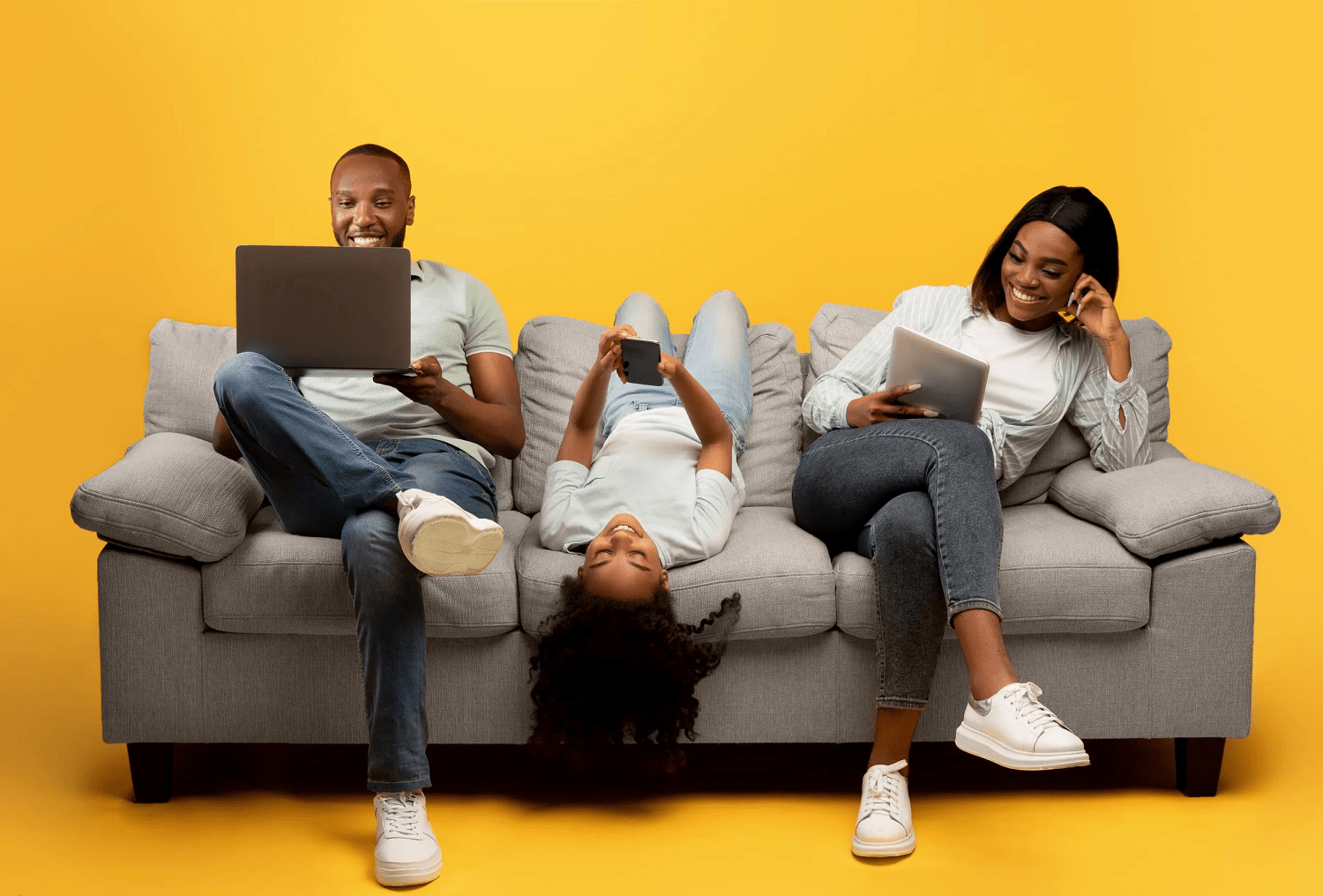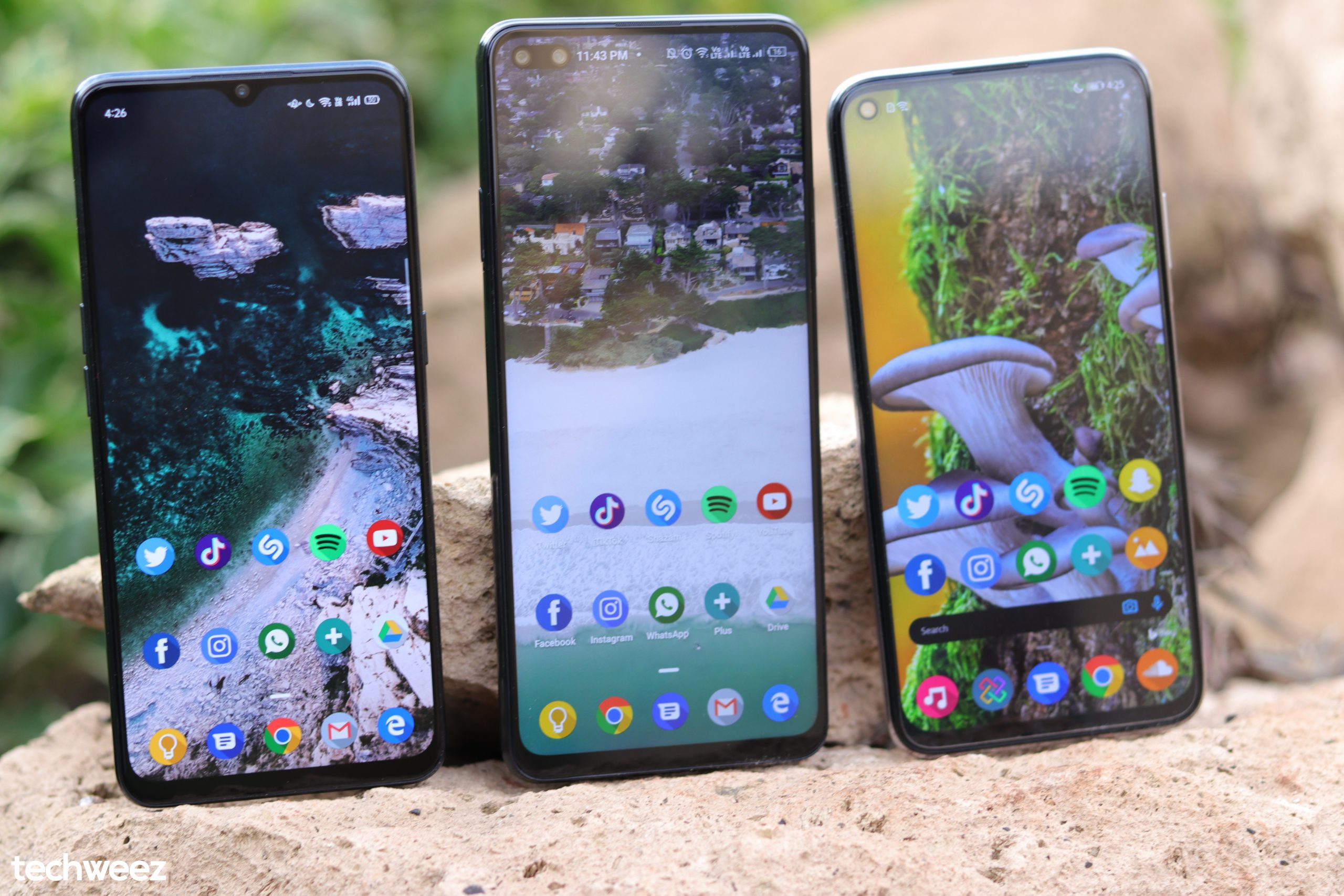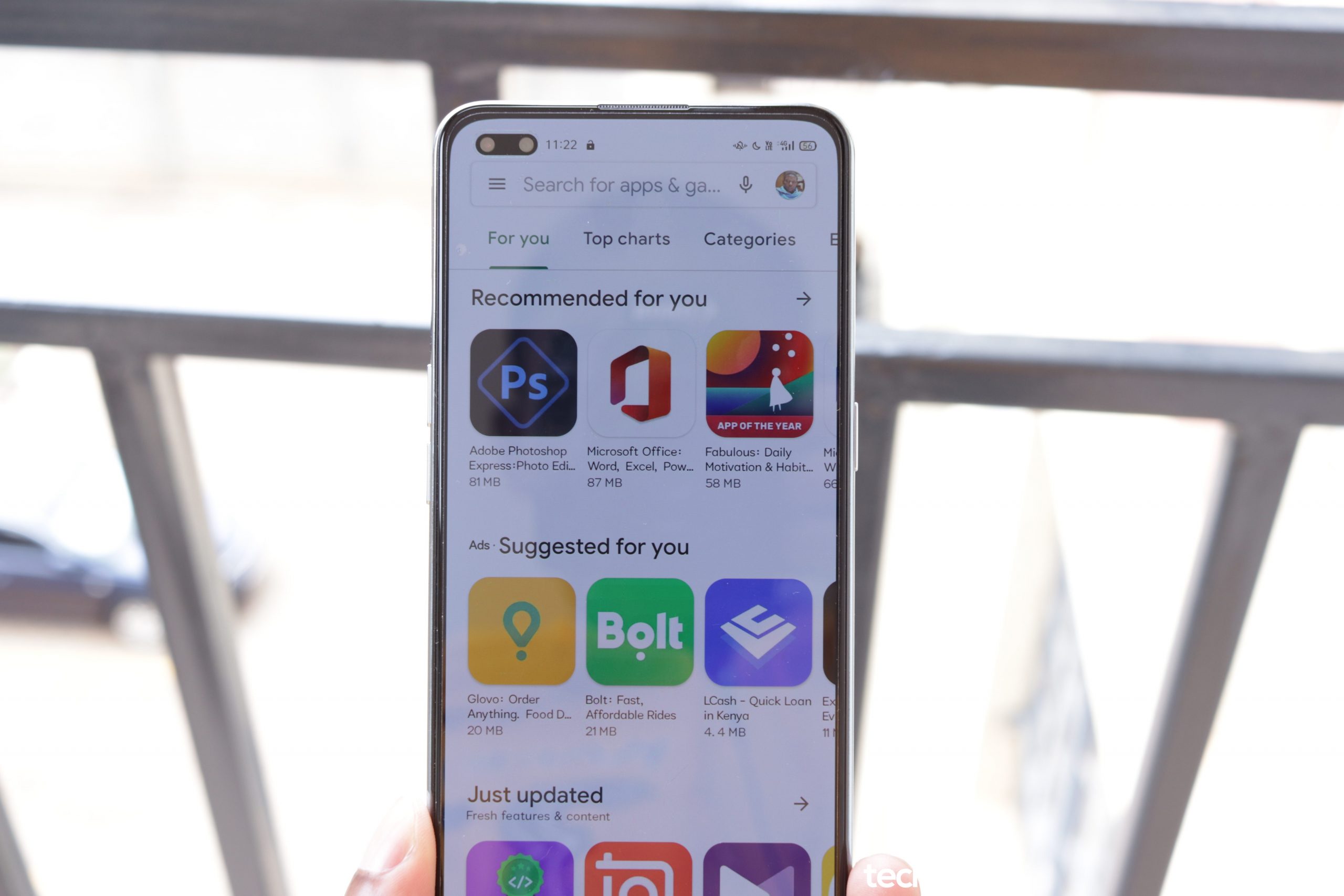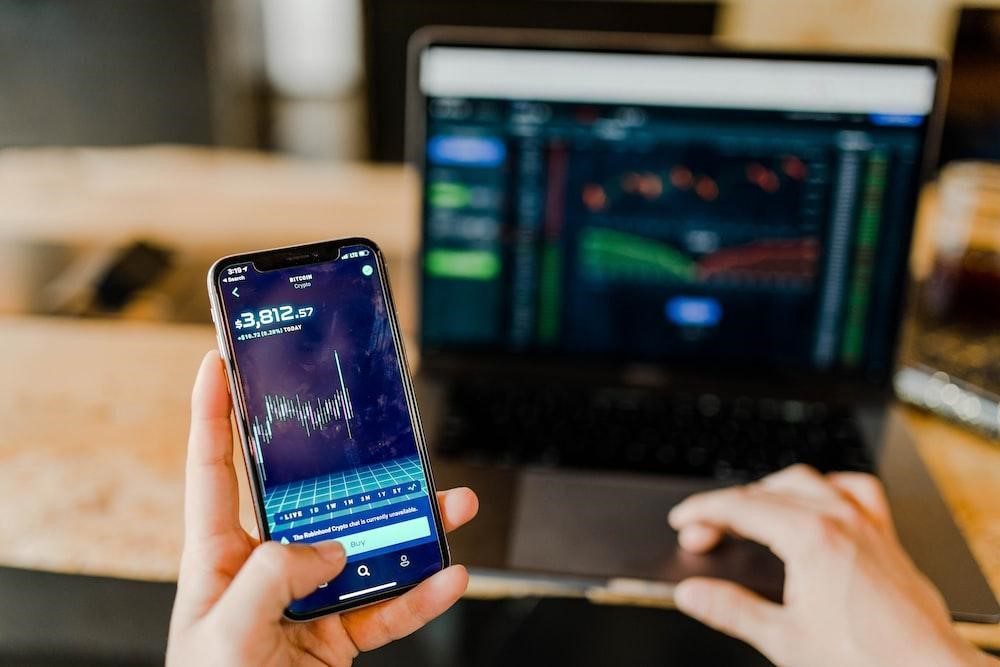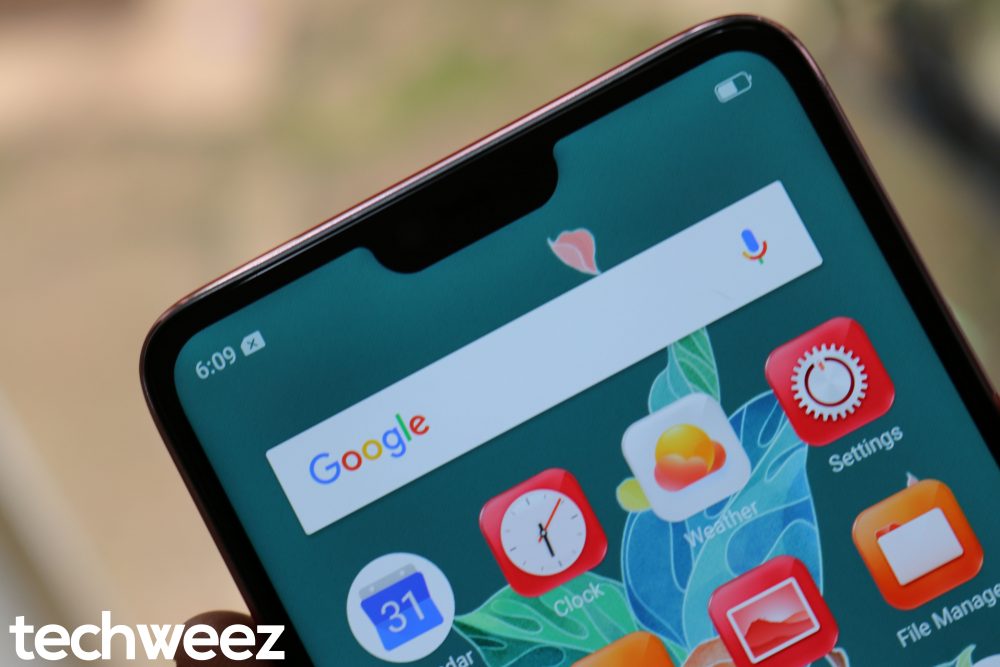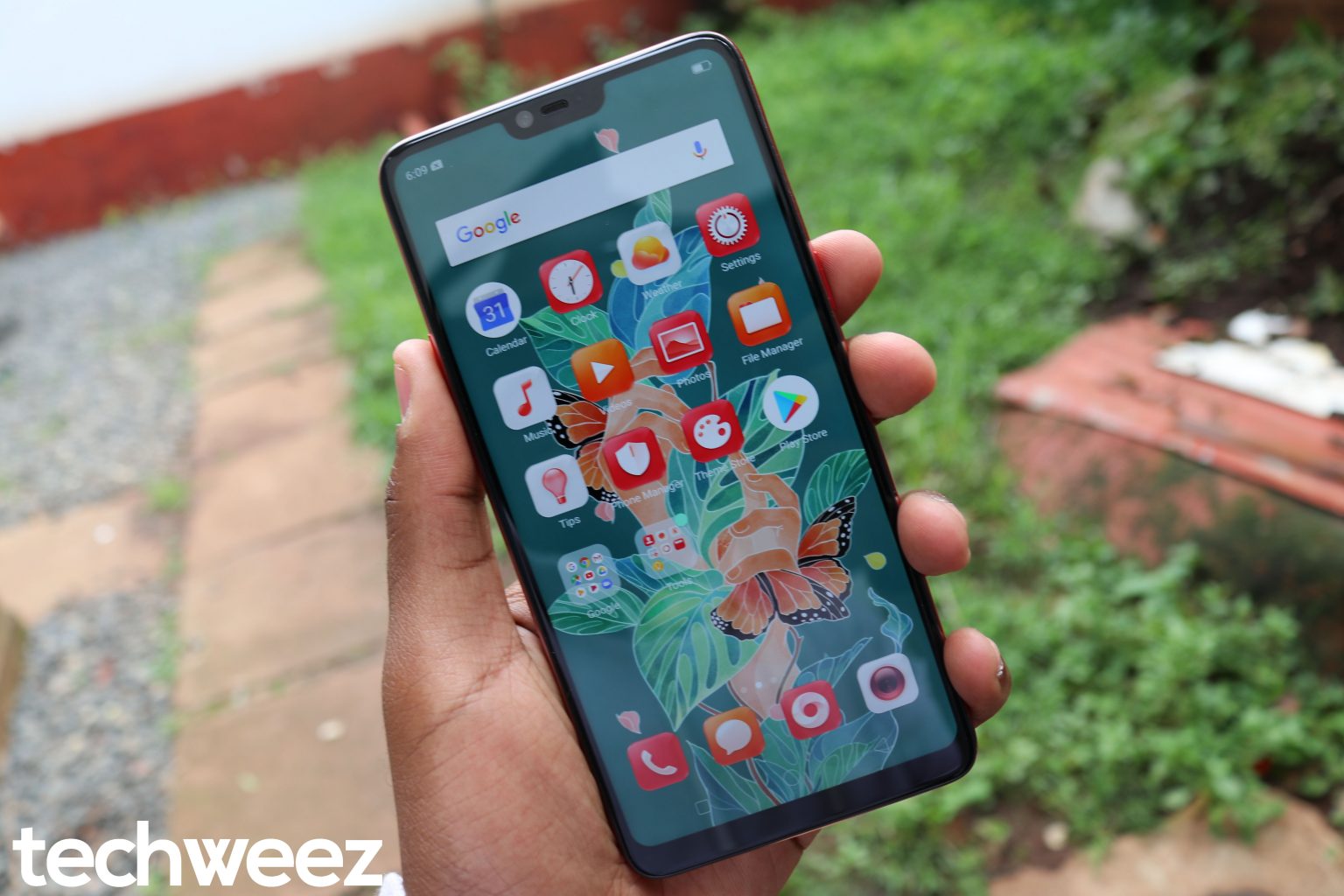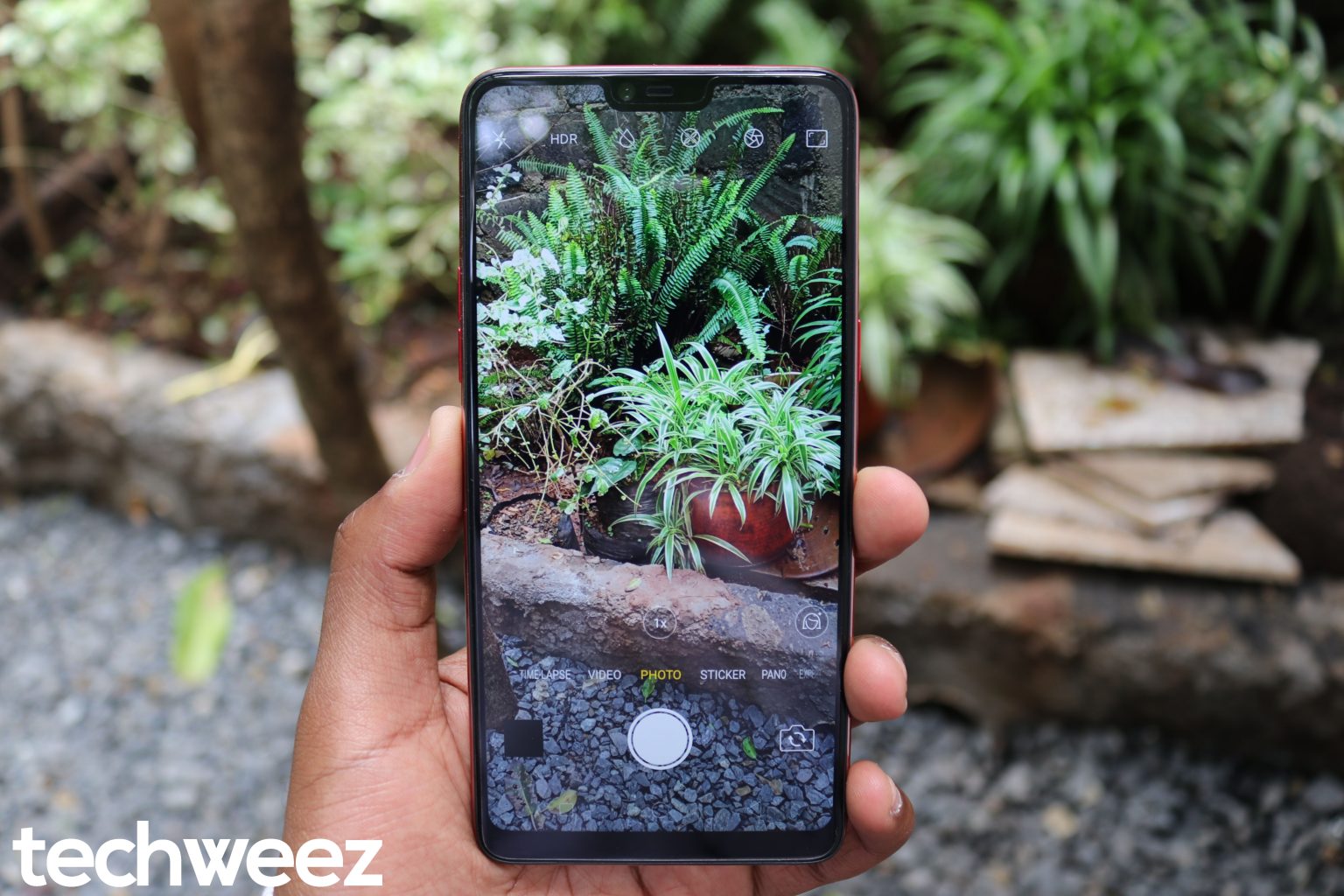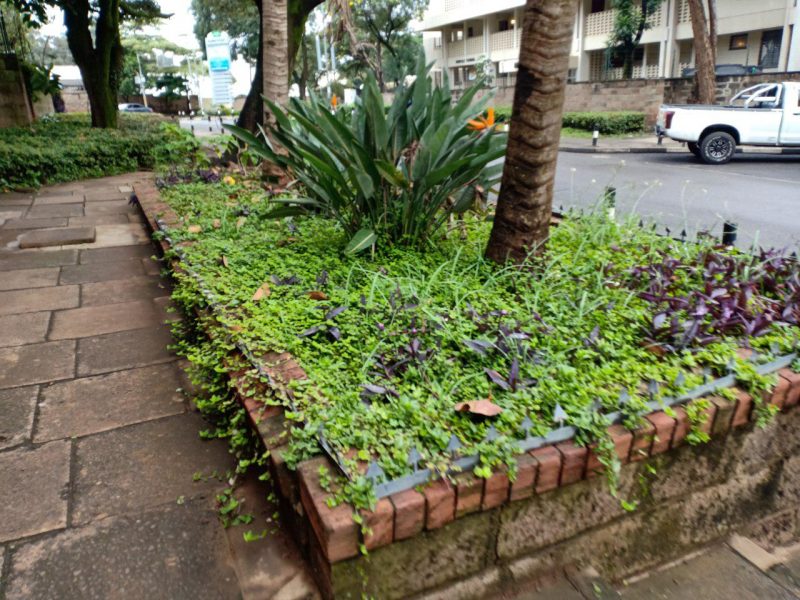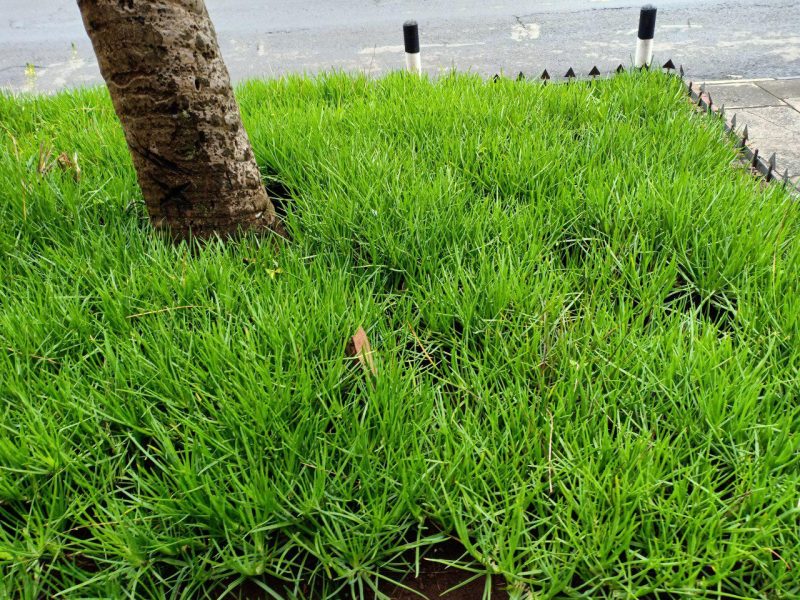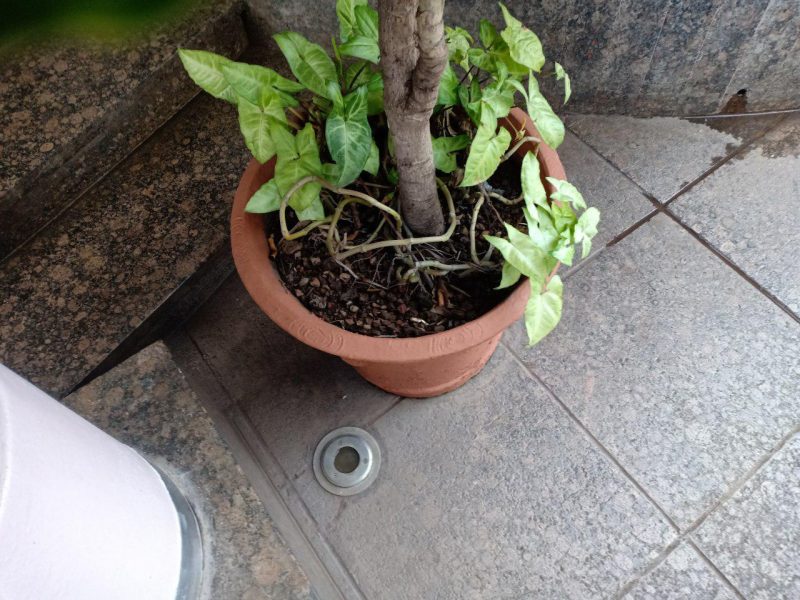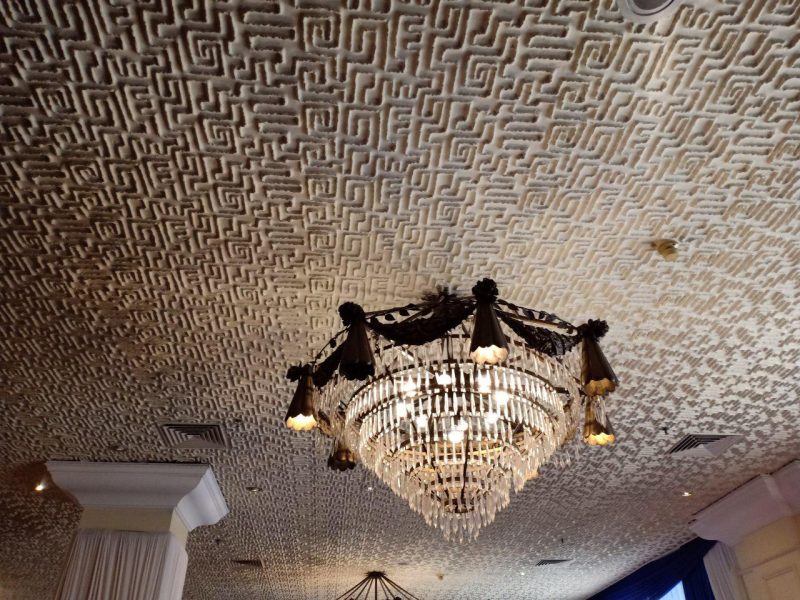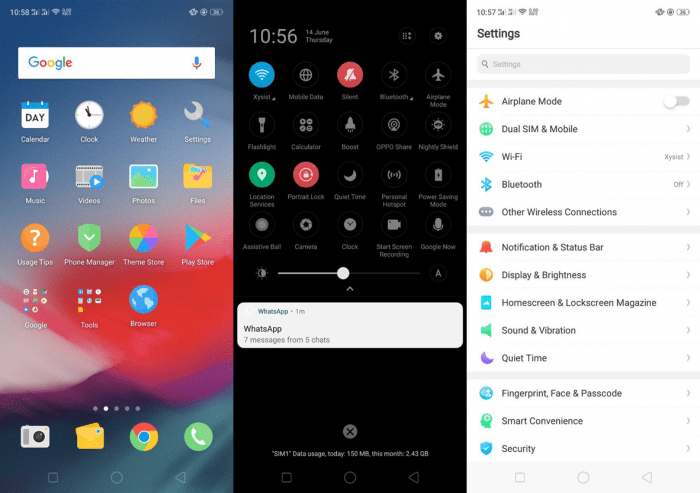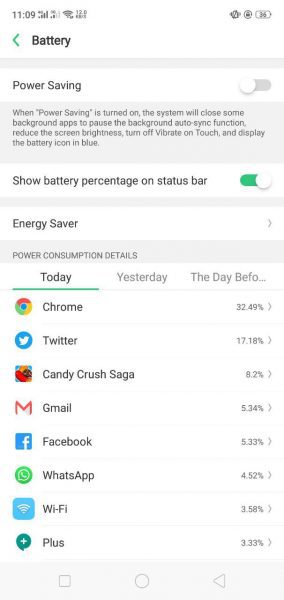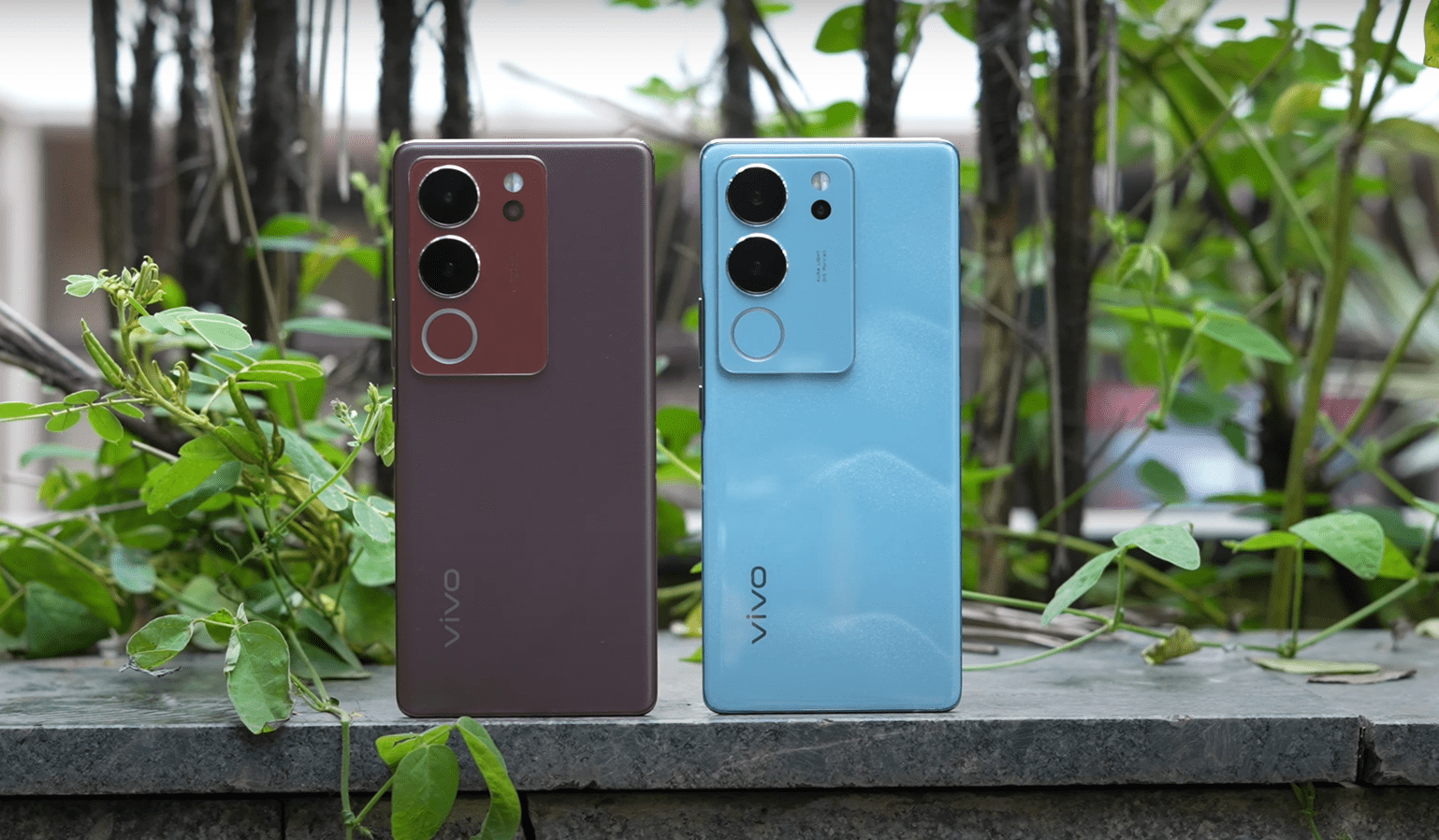OEMs across the globe, whether mainstream or otherwise are churning out phones without antiquated 16:9 slabs for newer 18:9 aspect ratios that put bezels on a diet. It is a working model that guarantees a larger display on relatively smaller footprint, which improves handling and one-handed usability. OPPO has done the same thing for its flagship device in Kenya, the F7 that we have been playing around with for a month or less. Is 2018 the year OPPO will finally make a mark in the Kenyan market that was once ruled by Samsung until Transsion Holdings with its Tecnos and Infinix devices happened?
Perhaps. Then again, the F7 has some design cues from past OPPO devices that are distributed locally. It is mostly built from plastic especially on the back (which does a fine job at aping glass), but a wise decision as it keeps the weight of the phone down for a 6.23-inch handheld. That is a notable progress for people who adore their handsets being almost all screen on the front, and that is a substantial number considering the tech-savvy niche that wants to be abreast with the latest trends in the market. Still, the F7 does not stray away from previous OPPO phones such as the A83, with a screen that appears to float on the chassis.
We have a red unit in the house, and if that is for or against your taste for phones entirely relies on taste, which includes the power to stand out from conventional-colours touting individuals or aligning to the masses that like their cellular handsets black or white. It is also a unique colour owing to the limited number of red phones that retail locally.
Hardware Overview
In my opinion, it is hard to tell an OPPO device from the sea of phones in the wild. This is particularly difficult on the back that looks like any other Android, save for the single camera and an oval-shaped fingerprint sensor. Turn the phone to the and you’ll be greeted by its signature move of putting the screen slightly above its chassis like it is flthe oating. I saw the same design choice on the mid-range A83 that we reviewed a few months ago.
Perhaps the most memorable design choice for the F7 is the inclusion of a notch. It has the earpiece and a huge 25 MP camera that we will talk about in a moment, so sit tight.
Unfortunately, the notch is devoid of a notification light, which is kind of sad considering the space is sufficient for it – and the fact that the F7 lacks any form always-on display for notification alerts.
As we highlighted, the F7 is constructed mostly from plastic, which, quite frankly, does not bother me at all. It also looks modern with the tall 19:9 aspect ratio that is capped at FHD+. The corners and the display are rounded.
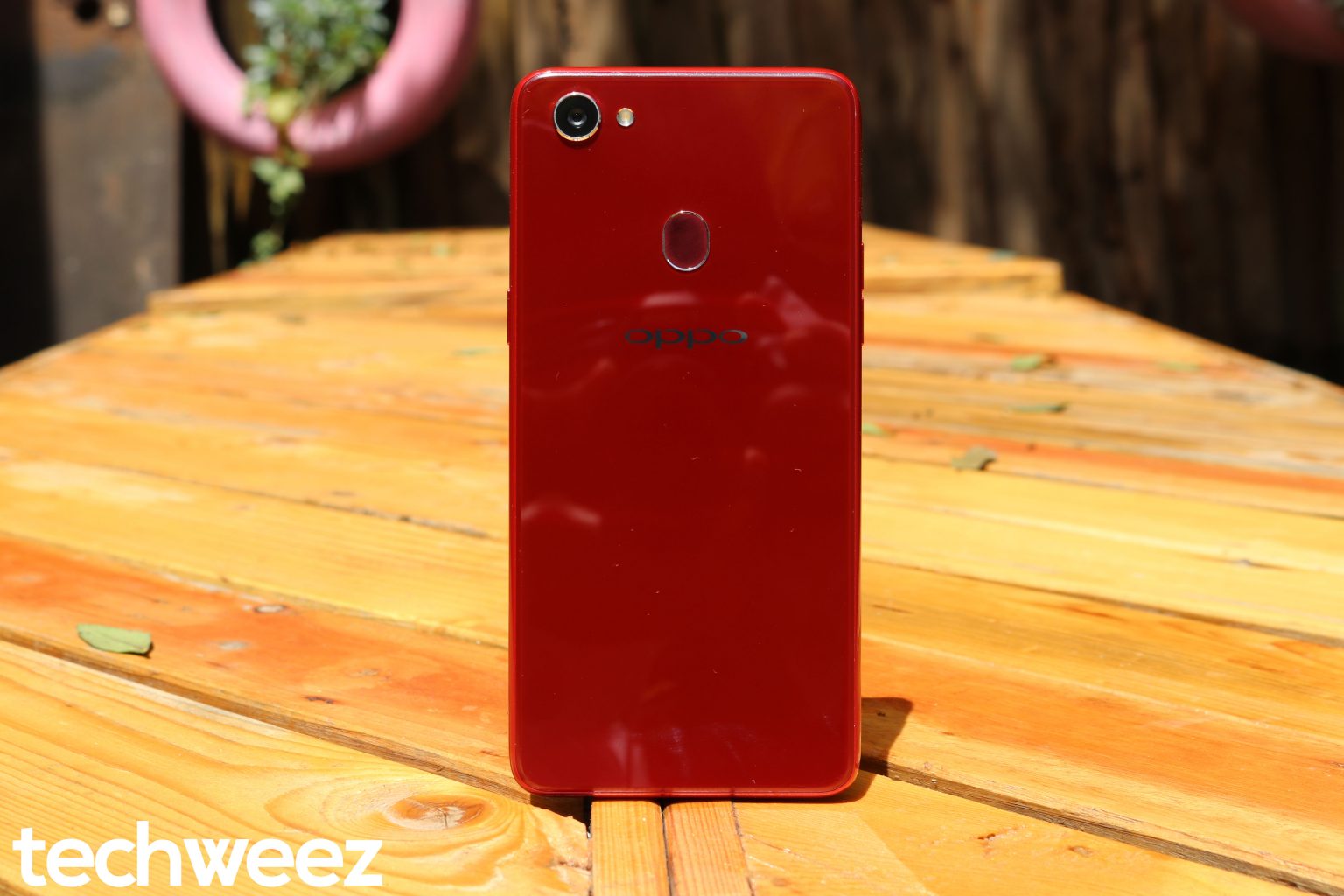
Some of you might overlook the mentioned shortcomings, which we, quite frankly, are not happy with as the Techweez Team. OPPO’s decision to limit its admirable charging speeds for the R series does not make sense to us, and we hope this madness will be rectified in the coming days.
Nevertheless, the F7 scores good marks in the ergonomics department. I can comfortably use it with a single hand, a feat I could not achieve on almost similarly-sized Galaxy Note. The fingerprint sensor is perfectly positioned and is quite fast. Face unlocking that also works awesomely is in the mix, and I cannot stress enough how it has grown on me. I will thoroughly be subjected to Face Unlock withdrawal symptoms once I move on to another phone.
In terms of build quality, it is good for the price. There are no visible seams or finicky buttons that we see in lowly-priced devices. The rear camera has a slight hump, but you are not going to notice it as the device lies just fine on a flat table sans rocking. What I’m trying to say that the OPPO F7 is built well save for minor, personal annoyances that I’m yet to observe, or experience.
How about that huge, yet manageable 6.23-inch screen?
I must admit I was slightly disappointed by the F7’s screen when a colleague handed me it sometime in May. In my defence though – and do not get me wrong – I was rocking the Note 8 at the time, which is a Samsung that also happens to be years ahead of the competition in terms of display quality.
The F7’s screen is not the brightest but serves me just right for the most part. It should do the same thing for you too unless you are really picky or been spoilt by Samsung’s Super AMOLED displays. The PPI is a modest 405 on a 6.23-inch IPS LCD screen.
It is highly unlikely users will ask for more as far as the display offerings are concerned. For instance, auto-brightness works as advertised. If that is not your cup of tea, manual adjustment is present, which is what I do in most times.
Annoyingly, the LCD does not dim as low I would want it to; those late-night readings will be a bummer. On the bright side, there is a Nightly Shield feature that kicks in a blue light that supposedly aims to take care of erratic sleeping patterns as a result of the mentioned light.
Cameras and the selfie expert moniker of the past OPPOs
As we mentioned, OPPO does not sell its R line of phones in Kenya. This means that locals will take some time before they are graced by a dual-camera OPPO branded phone.
Either way, I’m still impressed by shots the single 16 MP camera takes – a feat that is heightened by a 25 MP selfie snapper on the front. Both cameras are remarkably snappy too.
Regarding the primary camera, it has a modern f/1.8 lens, which is excellent by any means. It is augmented by an LED flash for night shots.
The software experience is pretty straightforward: modes are populated beneath the white shutter button. You can take panorama shots, time-lapse videos as well as a modest manual mode for tinkerers. Of course, this is an OPPO so there is a beauty mode to eliminate facial blemishes (for both cameras – not just the front one). You can also zoom in images up to 2x (nothing special happens here. The images are just zooms that are bumped up to full resolutions of the sensor) and videos without loss of detail.
The F7 snuck in the world’s most overused word in mobile photography – AI. It is a scene recognition feature that automatically detects if, for instance, you are taking a shot of your food and adjusts settings (behind the scenes) to generate a better image.
Look, I’m not going to dazzle you with fancy photography vocabulary because that is not my niche but you need to trust us that the F7 takes fantastic pictures. Here is a gallery to embellish your retinas.
Sadly, there is no portrait mode here, but the camera is capable of cool macros if you take your time.
The excellency of imaging capabilities is also seen on the 25 MP camera that is lodged in the notch. The megapixel count of the sensor means the selfies taken are of great detail even when zoomed out on a big screen.
What is more, you can pull portrait shots on good lighting. The blur effect is passable for a single shooter as other phones require dual cameras to pull this off.
Additionally, there is a myriad of filters to showcase the feature set of the selfie eye.
Finally, video is capped at 1080p at 30fps. There is no 4K option due to SoC limitations so if that is important to you, then the F7 is not the phone for you.
ColorOS V5.0 on top of Android Oreo 8.1.0
This is the best form of ColorOS that you are going to get on an OPPO device. It is colourful as soon as you power up the F7, and I suspect the reddish theme is purposely set as default to match the red colour of the smart handset.
Android Oreo 8.1.0 complements the skin with nice touches like long presses to summon app shortcuts. Autofill works like a charm as well.
Similar to most Chinese Android phones, the skin is not light in terms of customizations and boy, aren’t they plenty! I’m still going through them, and briefly, they stretch from theme and icon installations to home screen customizations. The Settings panel is a little cluttered but manageable – but has a search bar for quick access of features. Similar to iDevices, some app settings are replicated in Settings.
The notification shade offers a peek into some features that are bundled in the F7. For example, Assistive Ball calls a floating action button for gesture-based navigation. The same function can also be performed via gestures popularized by the iPhone X. The same navigation buttons can be rearranged to fit your usage patterns.
Nightly Shield, OPPO Share and screen recoding functions (this should be standard across all phones by now) are in tow.
We are not done: you can run two apps side by side (a much better experience on phones as tall as the F7); Game Acceleration frees up RAM and augments the GPU with more graphics oomph; app cloning allows you to use two accounts on the same app – and so much more.
While I, among other people in this line of work have hated on Android skins, I must admit that strides have been made in the right direction. Of course, stock Android is fluid and gets updates on time – yet these two gains fail to cut it in modern times where OEM additions are parked with a truckload of features to put the former to shame.
Realistically, ColorOS is an obvious win this time around as its features are genuinely useful. Their theme store could use some work though. And those updates should stream in on time (I have since received ow minor bug-squashing OTAs).
Battery
I trusted the 3400 mAh battery sealed in the phone once I picked it up. Why? Well, here is a short story. In March, I hit the road with a bunch of strangers to Nanyuki. I had two phones in my pocket: Xiaomi Redmi Note 4X and OPPO A83. This was my first experience and long-term encounter with an OPPO. In sum, my Redmi 4X was dead before 6 PM (I used it heavily, although I did not fire up its camera). The A83 was my camera device and it pulled to the next day without forcing me to hug a wall. Impressive, right?
Battery life is even better on the F7. Really good – and we can only thank ColorOS and Oreo optimizations. As a reference mark, I use phones quite heavily, with tens of apps in memory. So, you need to trust our assessment in this case as I cannot stress this enough.
Performance
Over the time I have been testing the F7, there is no single instance the device got overwhelmed by pushing tasks, or more tasks. The good performance is mostly due to the Helio P60 that has two quad cores; 4x Cortex-A73 that is clocked at 2.0Ghz and 4x Cortex-A53 that run at the same speed. Graphics are handled by Mali-G72 GPU with three cores. Both (CPU and GPU) are complemented by 4GB of RAM and a roomier 64 gigs of onboard storage.
This combination does not disappoint. Tasks are executed fast; app launches are swift and scrolling through menus does not exhibit dropped frames.
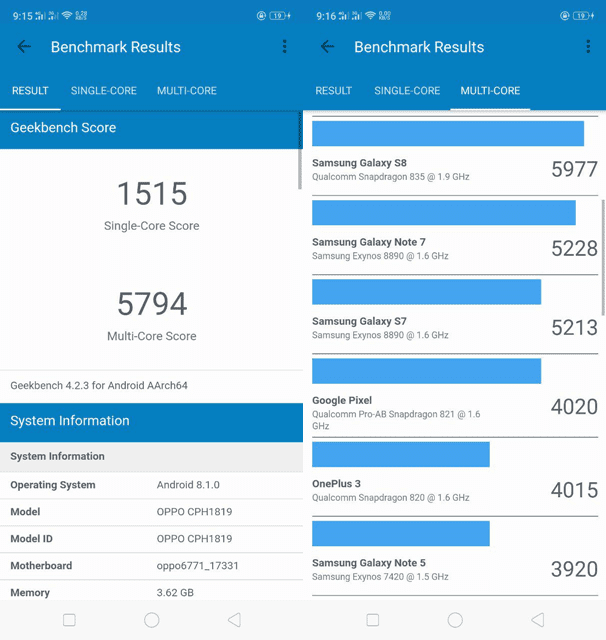
All in all, the P60 does not illustrate a weakness in my day-to-day usage; it is actually a really fast phone, and that’s all that matters.
Miscellaneous points, the competition and conclusion
- The single speaker at the bottom of the device is just average. On the bright side of things, the packaged earphones, which look exactly like Apple’s earpods, are good. Their design, while not a perfect fit for some ears, allows them to be used without ear tip replacements.
- It is 2018 and the F7 has a USB A port. This is just sad.
- Charging speeds are just average as the phone tops up at the 2-hour mark or so. Again, it is 2018 and we want VOOC fast charging for OPPO midrange smartphones.
- ColorOS, as mentioned, is serviceable, especially with Oreo toppings.
- You can slot in your two SIM cards and a microSD card as the tray is not the hybrid type that forces a user to forgo a second SIM card for external memory.
- Did we say performance is awesome?
- How about the quality of the cameras? Very good, to say the least – save for low-light scenarios that are still problematic for mobile photography.
- The buttons (volume on the left, power key on the right) are responsive.
- The headphone jack is where it is supposed to be – the bottom end just next to the USB port.
- Face Unlock is wicked, turbo fast.
So, which are F7’s main competitors? We have two; Nokia 7 Plus and Huawei P20 Lite. We have reviewed both; P20 Lite happens to be the cheapest in the pack at around KES 34,000 or less. It is a modern looker with a notched screen, good cameras, and an excellent, plastic build. Its cameras are equally impressive, with additional touches like a USB Type C port.
The Nokia 7 Plus, on the other hand, is doing a fine job in cementing HMD Global (it manufactures phones with the Nokia brand) name in Kenya after a failed marriage between the Finnish manufacturer and Microsoft. It has a tall screen, USB Type C and a clean version of Android Oreo. Furthermore, its build quality is great, and it even packs dual cameras in line with modern trends. Unfortunately, it attracts a KES 47,000 price tag, although you can get it for 10K less if you look around (but forgo perks like local warranty in case something goes wrong).
So, where does this leave us? Well, if battery life and cameras are important to you, go for the F7. If software experience and timely updates tickle your fancy (by the way, the 7 Plus is an Android One device), then Nokia is the way to go. If you want to save some money and still have a good experience, buy the P20 Lite.

